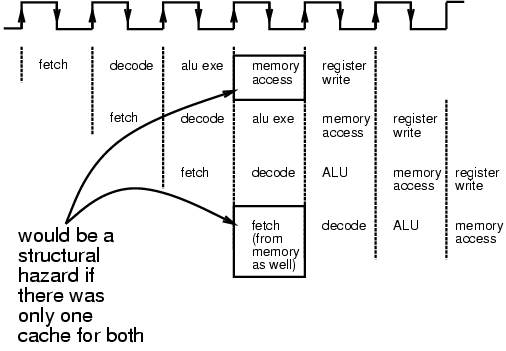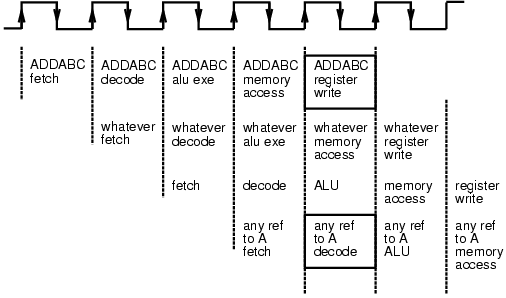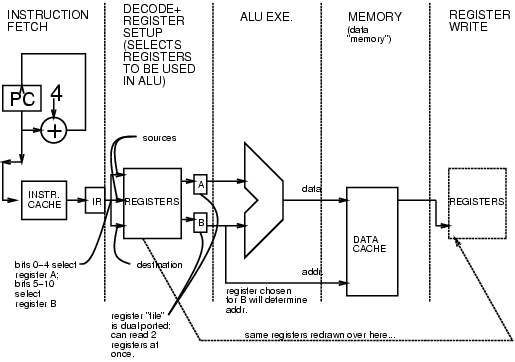architectural details of pipelining
decode+memory access Structural Hazard solved by cache.
HAZARDS:
- data hazards (solved by forwarding)
- control hazards (loops, branches, etc.) solved by determining whether or
not the branch is taken...
- structural hazard,
solved by such methods as using separate instruction cache (for FETCH)
and separate data cache for MEM...
A structural hazard would for example result from memory access of
instruction fetch and memory access of data, were it not for
separate data and instruction caches:

another example of a structural hazard is when decoding (setting up input
registers) makes reference to same register as a register write:

brief note on cache
note, of course, that the existence of cache makes the instruction fetch
(from memory) and the data memory access (also from memory) as fast as
other elements along the pipeline.
delay between setup and use of registers:
ram delay versus register delay.
but register access is at L1 cache speed.
L1 operates at same speed as the CPU core, registers, etc..
allows pipeline to do one cycle memory access.
cache levels:
- L1 cache: inside the die itself.
runs at processor speed (e.g. 100MHz, 500MHz, 600MHz, or the like).
- L2 cache: speed of external...
DEC alpha: 83MHz instead of 600MHz of level 1 cache.
L2 cache is comprised of external ICs.
- RAM: 100MHz SD RAM can't go at 100MHz (that's the bus speed);
may take several bus cycles to access.
- hard drive: note that instructions originate from hard drive,
are "cached" in RAM, and then RAM is further cached in cache.
- backup tape: archives, etc..
microprocessor rationale: speed of light fixed, so speedup by moving
components closer together.
example: inclusion of L1 cache on same die for speedup: line drivers
dissipate power; capacitance of copper wire from die to leads...
architectural details of pipelining




